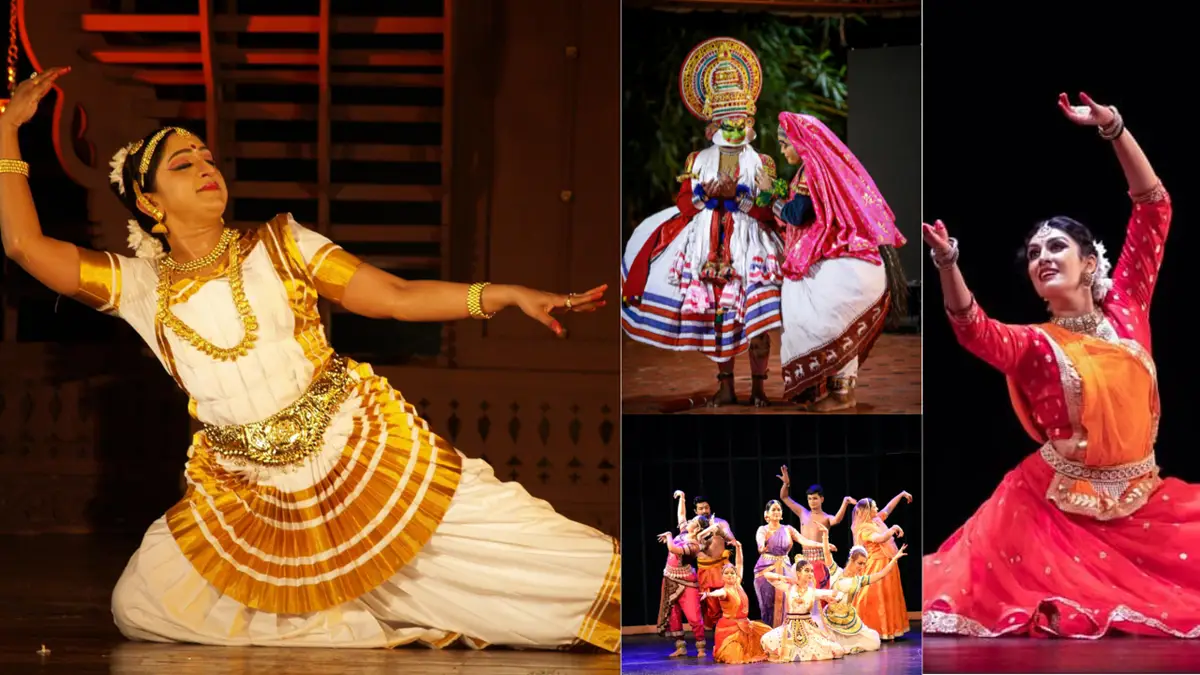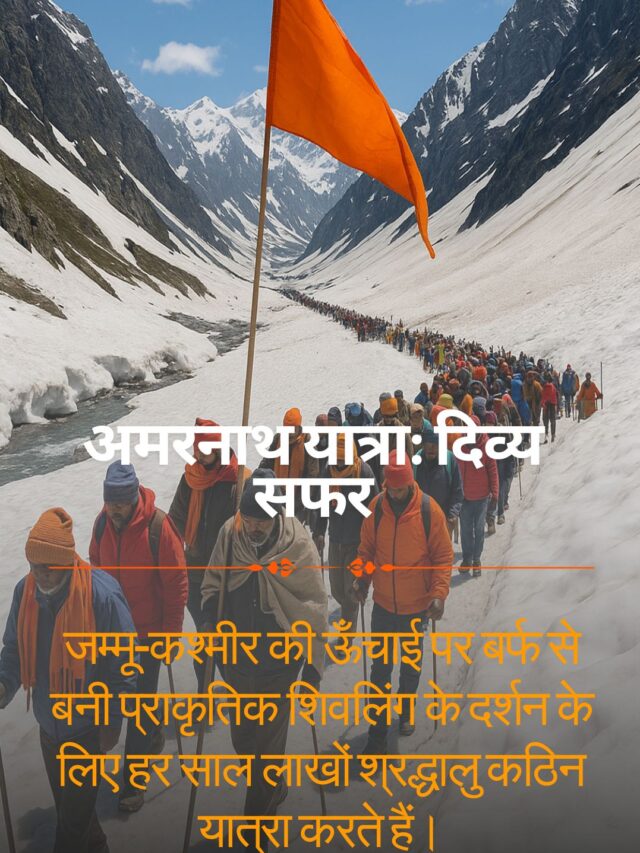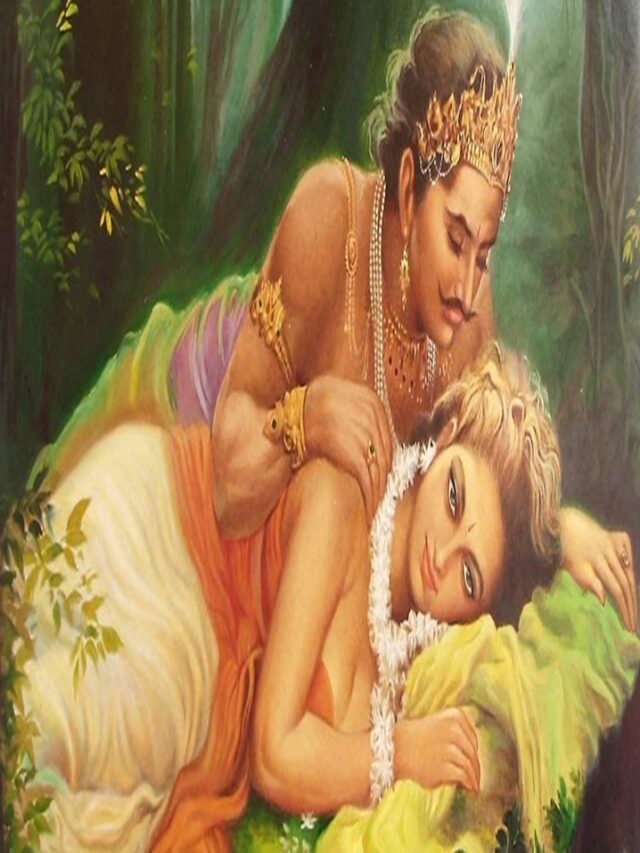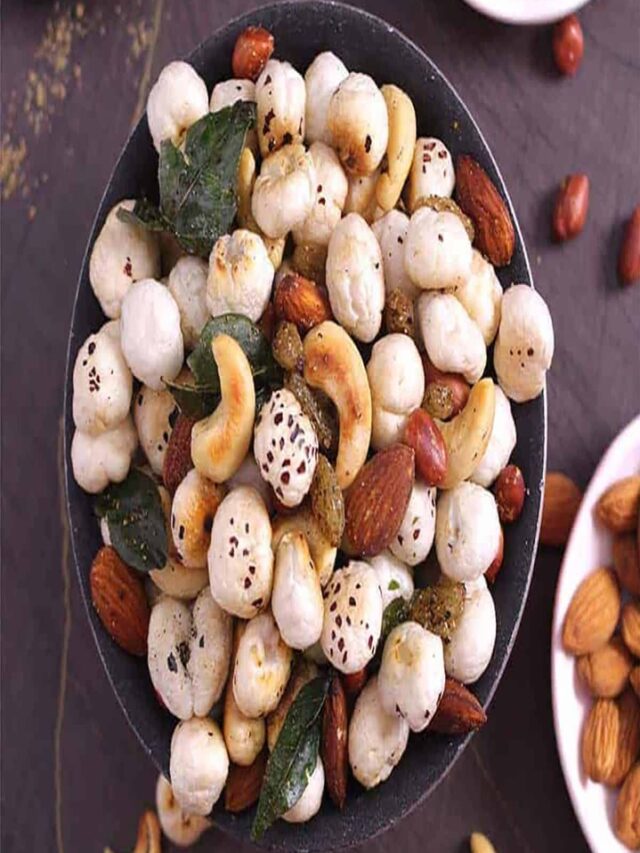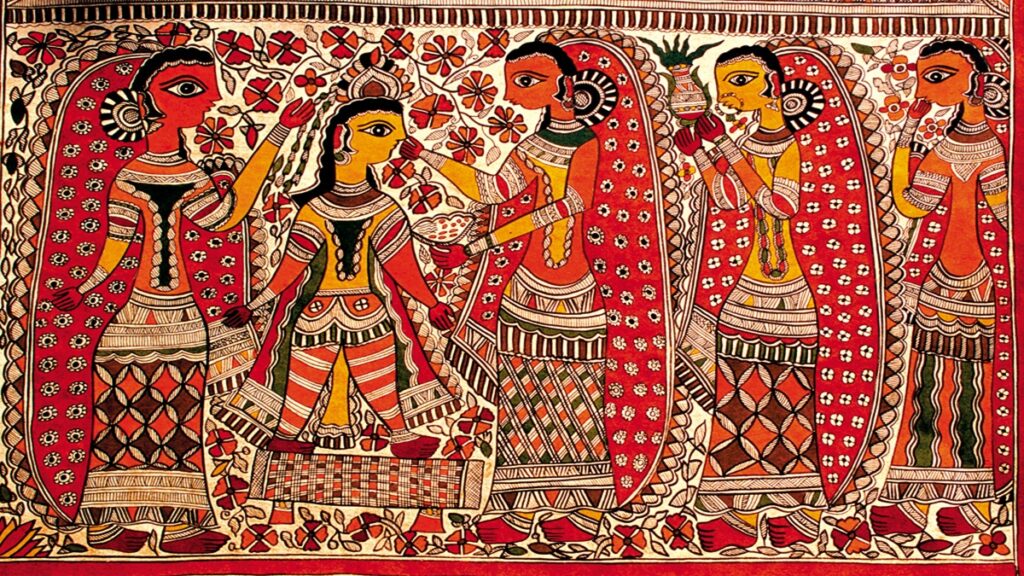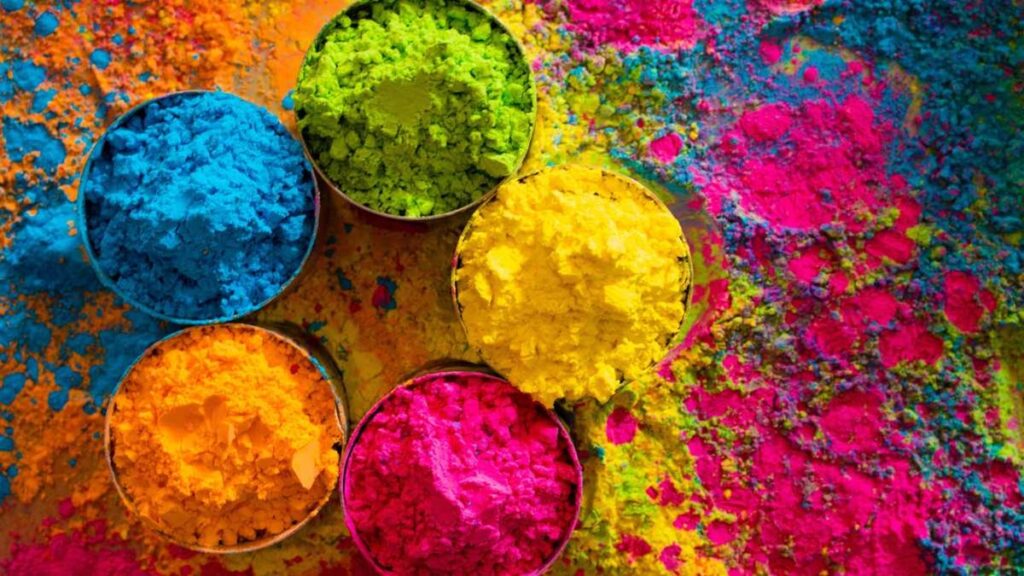Table of Content
Contents
India’s cultural heartbeat is in rhythm, steps, and narrative. From temples to courts and contemporary stages, dance has continued to be a vibrant living embodiment of spirituality and heritage. Within all the performing arts, classical dance is unique—firmly grounded in tradition, formalized by ancient scriptures, and sustained by successive generations of committed practitioners. Its roots date over 2000 years, deeply placed in Vedic literature and mythology. The oldest and most reliable text on dance, the Natya Shastra by Bharat Muni (भरतमुनि), dating back to about 200 BCE, is the basis of all Indian performing arts.
In this blog, we explore the 8 classical dances of India, understand their regional origins, and discover how they differ from folk traditions. Let’s dive into the mesmerizing world of Indian classical dance.
What Are Classical Dances of India?
Indian classical dances are not merely artistic forms of expression—these are spiritual practices. These dances are derived from the ancient treatise Natya Shastra, which sets down explicit rules for expression (bhava), posture (anga), hand positions (mudra), and sentiment (rasa). These dances are performed to devotional or mythological subjects and are usually a combination of movement, music, and drama.
There are eight officially established classical dance forms of India. They all represent the varied forms of classical dance, influenced by local history, religion, and performance techniques.
Classical Dance vs Folk Dance: What’s the Difference?
Essentially, although both classical and folk dances are instrumental to India’s cultural heritage, they vary in their origin, function, and expression. Classical dances are extremely stylized and spiritual, influenced by ancient texts and executed with carefully crafted technique. Folk dances are less stylized and focus on celebration, mirroring the day-to-day lives and feelings of local people. Here’s a brief comparison to discern the difference in classical dance and folk dance more clearly:
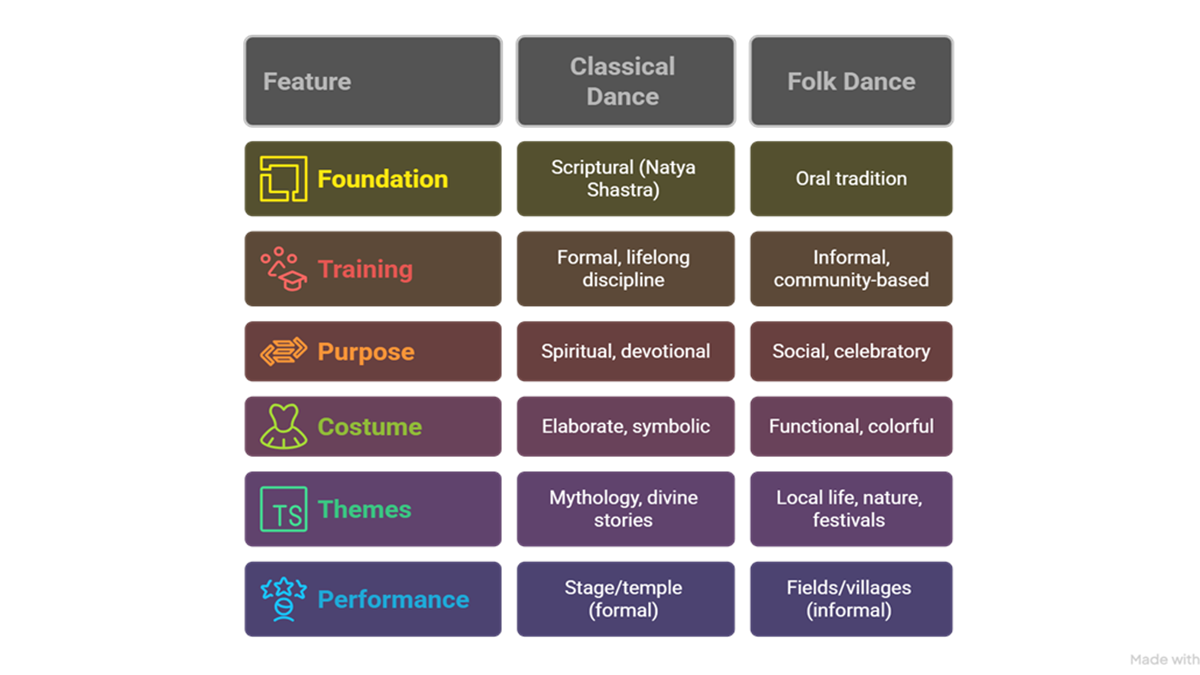
8 Classical Dances of India: The Magnificent Traditions
Here’s a complete Indian classical dance list, along with their origin states and highlights.
1. Bharatanatyam (Tamil Nadu)
Bharatanatyam, one of India’s most ancient classical dance forms, developed in the temples of Tamil Nadu in south India, primarily in the Thanjavur district. With origins that can be traced back much more than 2,000 years, it was usually performed as an act of devotion, as a form of offering to the divine. Bharatanatyam performances include precise hand gestures (mudras), strong and intricate movements of the feet, and narrative storytelling of the themes of Hindu mythology and philosophy.
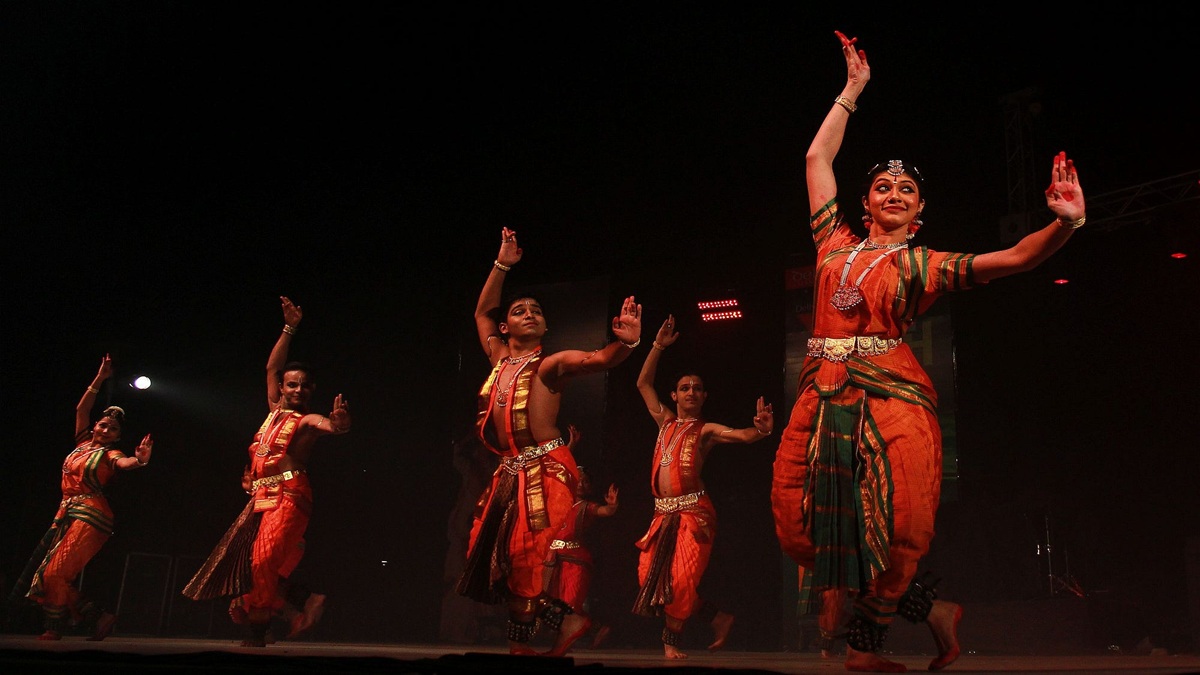
- Classical dance dress: A pleated saree stitched for movement, temple jewelry, and dramatic eye makeup
- Famous Bharatanatyam dancers: Rukmini Devi Arundale, Alarmel Valli, Mallika Sarabhai
2. Kathak (Uttar Pradesh)
Kathak is an ancient dance form that developed in northern India, particularly in the state of Uttar Pradesh, characterized by fast pirouettes, complex footwork, and elegant storytelling. Originally intended for temple bards to tell stories, Kathak began to develop into an art form in the royal courts of the Mughal era. Kathak still exists in three distinctive “gharanas,” (meaning families or styles) Jaipur, Banares and Lucknow, each represented in a slightly different styles of dance. Kathak dance is traditionally a solo embellishment performed by both male and female dancers and contains fast-paced rhythms, dramatic storytelling and emotional depth.
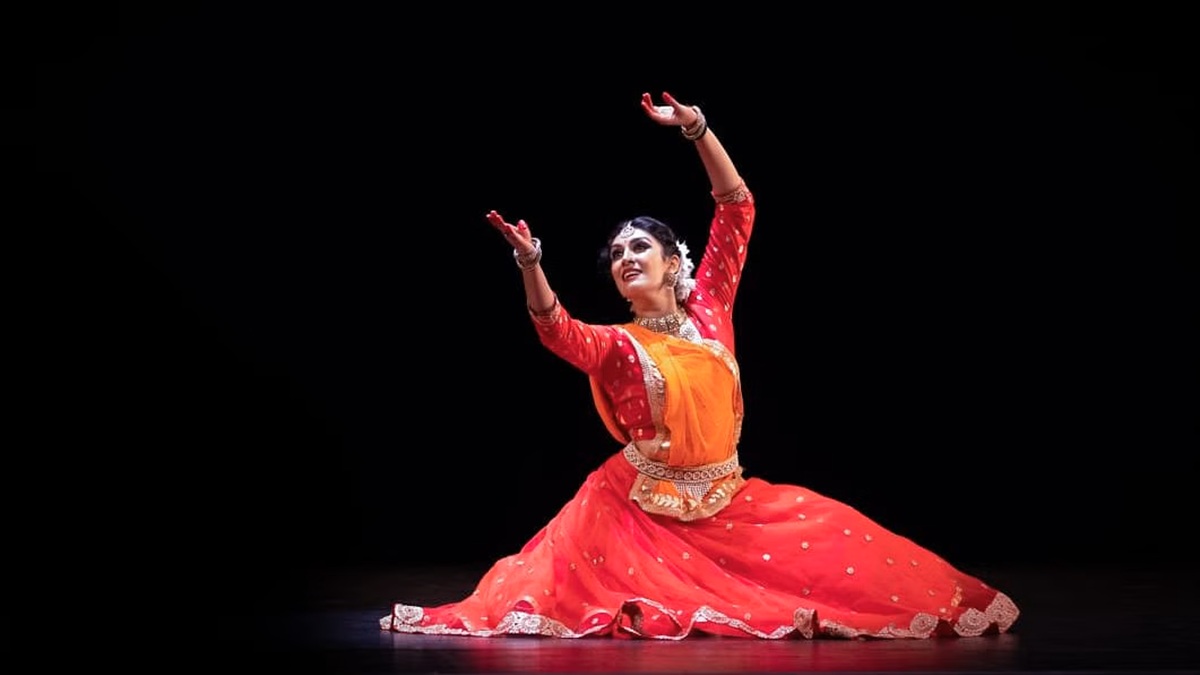
- Classical dance dress: Long flowing lehenga or anarkali with dupatta and ankle bells (ghungroos)
- Famous Kathak dancers: Birju Maharaj, Sitara Devi, Aditi Mangaldas
3. Kathakali (Kerala)
With its impressive use of both sight and sound, Kathakali is a classical dance form from Kerala which is over 300-years-old including elaborate makeup, dramatic expression, and vigorous storytelling. It illustrates stories from Hindu epics, particularly the Mahabharata, Ramayana, and Bhagavata Purana, bringing to life mythological characters through stylized movements of both the body and shagging of the face. Kathakali dance is performed with Kerala traditional music including vocals of padams and instruments associated with the Maddalam, Chenda, Chengila, and Ilathalam. The art form of Kathakali represents a magnificent blend of dance, drama, and music.
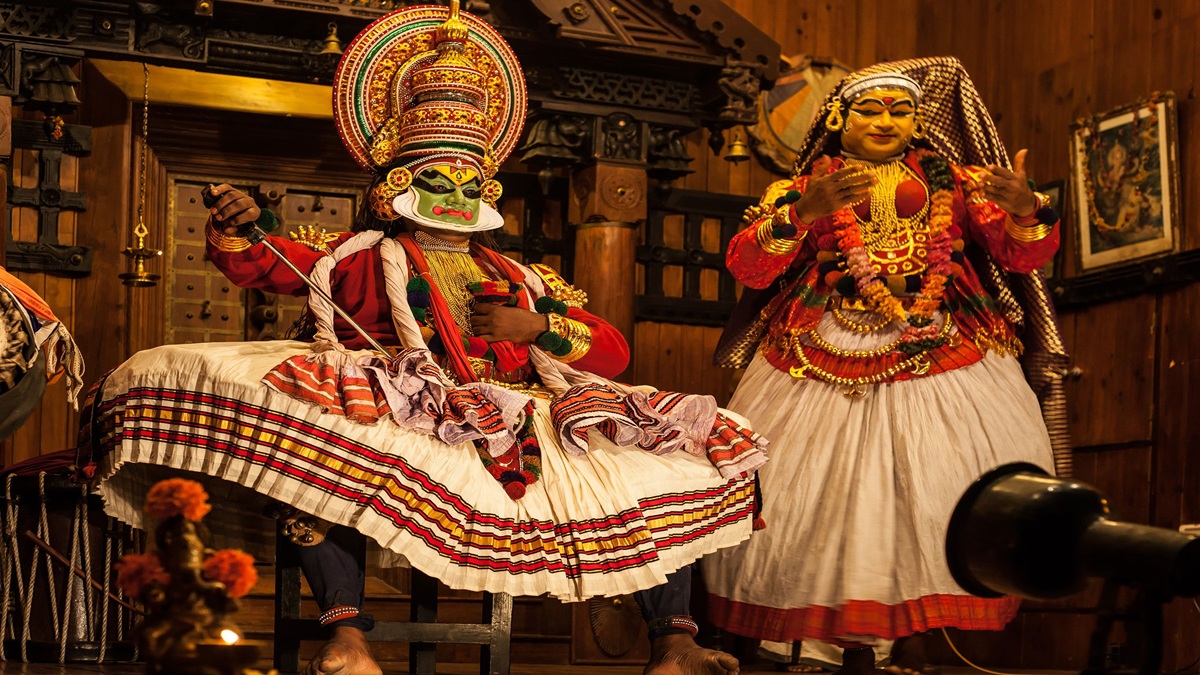
- Classical dance dress: Colorful costumes, painted face masks, towering headgear
- Often performed in temples or at night-long cultural festivals.
- Famous Kathak dancers: Kalamandalam Gopi, Kalamandalam Ramankutty Nair, Kottakkal Sivaraman, and Madavoor Vasudevan Nair
4. Mohiniyattam (Kerala)
Mohiniyattam is a classical solo dance of Kerala which is graceful and feminine in character. The name Mohiniyattam derives from “Mohini,” the female avatar or enchantress of Lord Vishnu. Mohiniyattam dance is part of the lasya style, and it features graceful, swaying movements and a soft lyrical expression. Mohiniyattam dance used to be performed in temples and festivals. It has a gentle level of rhythm and an expressive storyline that is calm and devotional, and celebrates beautiful, graceful, and spiritual feeling.
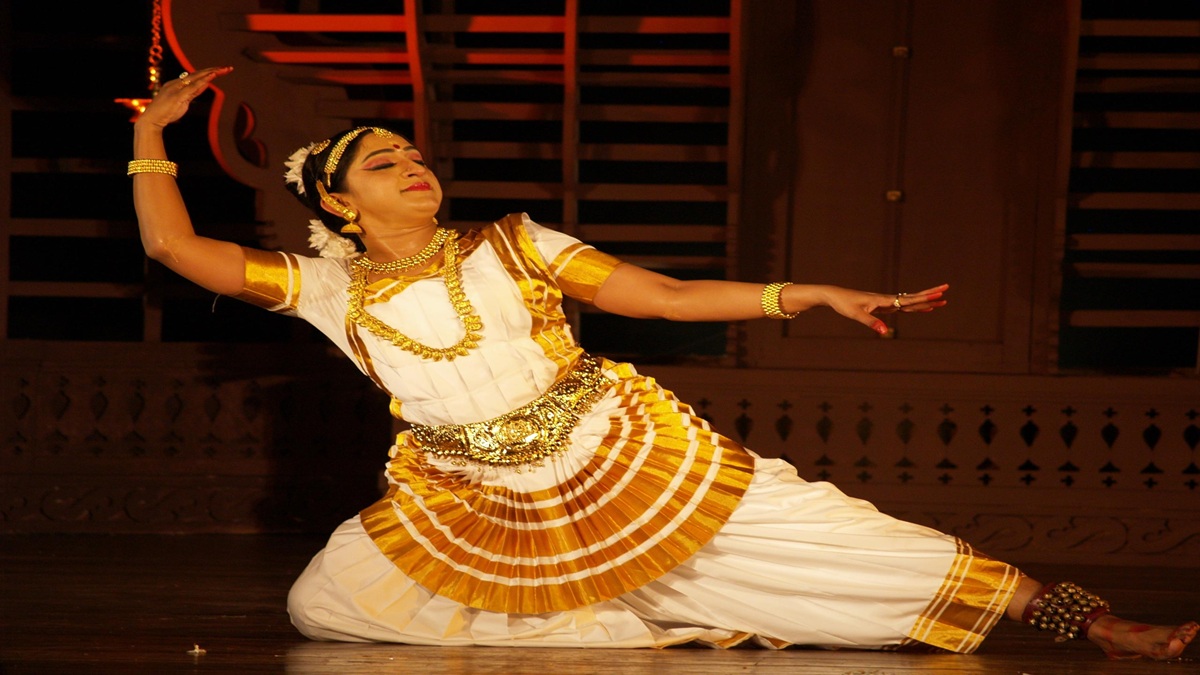
- Classical dance dress: White kasavu sari with golden borders, traditional jewelry, and jasmine flowers
- Famous Kathak dancers: Kalamandalam Kalyanikutty Amma, Sunanda Nair, Gopika Varma, Jayaprabha Menon, and Pallavi Krishnan
5. Odissi (Odisha)
Odissi, one of the oldest classical dance forms to have survived, has its roots in the temples of Odisha, a state in eastern India. Characterized by flowing postures, curvaceous movements, and lyrical expressions, it is inspired from ancient temple sculpture. Odissi was originally performed as a devotional offering and continues to be an essential part of the rituals and traditions of the Jagannath Temple in Puri. With its elegant narration and spiritual richness, Odissi continues to enchant viewers without losing its temple origins.
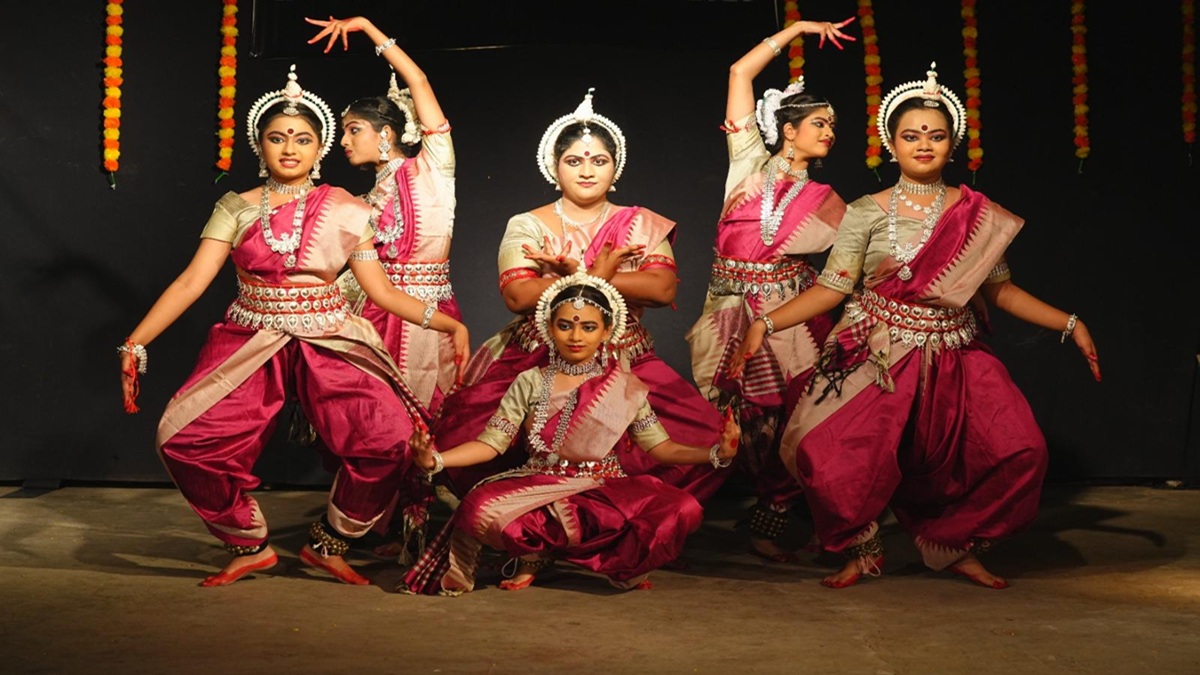
- Classical dance dress: Bright saree with silver jewelry and a signature headpiece
- Dancers portray tales of Krishna, Radha, and local deities
- Famous Odissi Dancers: Kelucharan Mohapatra, Sanjukta Panigrahi, Sonal Mansingh, and Deba Prasad Das
6. Kuchipudi (Andhra Pradesh)
Kuchipudi is a unique combination of dance and drama that emerged from the village “Kuchipudi” in Andhra Pradesh. Traditionally, performances were performed outdoors by male Brahmin artists. Kuchipudi was codified and systematized in the 17th century by Siddhendra Yogi. Kuchipudi performances incorporate solo and group dance sequences that demonstrate both expressively nonlinear storytelling and rhythmic precision. One of its distinctive features, the Tarangam, consists of dancers executing complicated steps on the edges of a brass plate; it reveals their precision and skill of balance and movement.
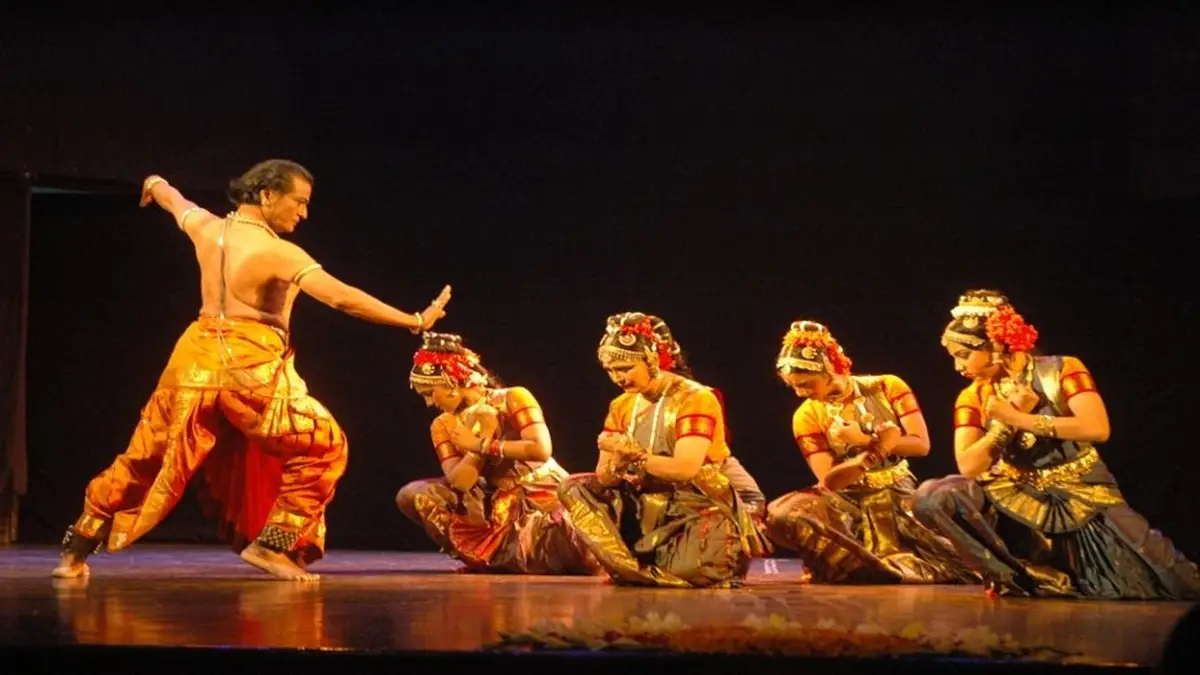
- Classical dance dress: Similar to Bharatanatyam with slight variations in makeup and hairstyle
- Includes speech and dance dialogues (rare in classical forms)
- Famous Kuchipudi Dancers: Vempati Chinna Satyam, Raja and Radha Reddy, and their daughter Yamini Reddy
7. Manipuri (Manipur)
Manipuri—also called Manipuri Raas Leela—is a classical form of dance that comes from the Vaishnavite tradition of northeast India. It dramatizes the divine love stories of Radha and Krishna and has both a religious and artistic impulse. It is distinguished by smooth, flowing movements, less physical attitude, and minimal expression of the face. Its soft and gentle sophistication, as well as devotion, makes it distinct from classical styles.
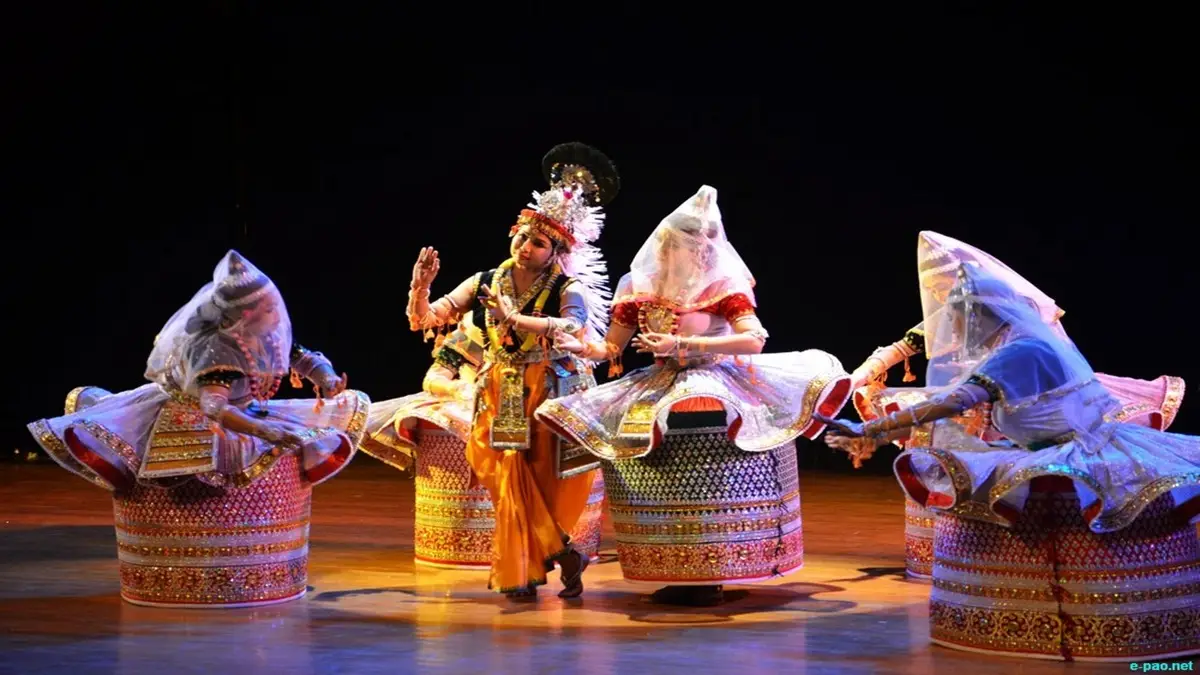
- Classical dance dress: Traditional stiff skirt, translucent veil, and elegant jewelry
- Famous Manipuri Dancers: Guru Bipin Singh (Father of Manipuri Dance), Guru Rajkumar Singhajit Singh, Darshana Jhaveri, and Yumlembam Gambhini Devi
8. Sattriya (Assam)
Sattriya is a classical dance style developed by Vaishnavite monks in Assam’s monasteries called Sattras. It is a form that dates back to the 15th century, introduced by the saint and reformer Srimanta Sankardeva. Sattriya dance is linked very closely to the neo-Vaishnava Bhakti movement. It comprises a combination of storytelling with rhythm and devotion. Sattriya has stipulations regarding hastamudras (hand gestures), footwork, aharyas (costumes and ornamental), and music. Traditional performances are accompanied by instruments such as khols (drums), taals (cymbals), flutes, and devotional songs or borgeets, which are based on classical ragas.
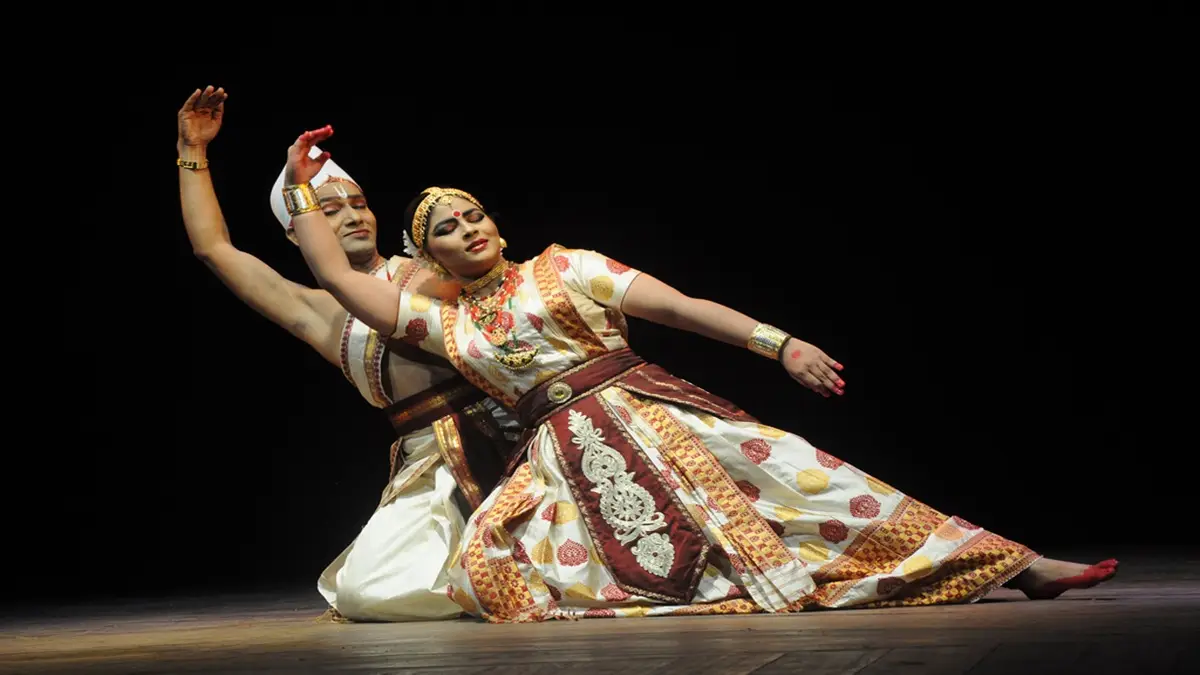
- Classical dance dress: Traditional Assamese silk attire (Mekhela Chador), jewelry, and headgear
- It was once performed exclusively by male monks as a form of worship
- Famous Sattriya Dancers: Guru Jatin Goswami, Dr. Bhupen Hazarika, and Sharodi Saikia, Manik Barbayan and Bhabananda Barbayan
From the blazing turns of Kathak to the reflective moving of Mohiniyattam, India’s 8 classical dances bear centuries of spirituality and artistic greatness. Each is intimately connected to where it comes from, relating tales not only of gods and mythology, but of the changing soul of India.
Knowing the classical dance forms of India, their state of origin, and distinctive characteristics enables us to appreciate India’s rich heritage. Whether you are a fan of the royal drama of Kerala Kathakali dance, the poetic expression of Sattriya dance, or the legendary poses of Bharatanatyam, there’s a beat for every heart.
So next time someone asks about the difference between classical and folk dance—or the beauty of Indian dance traditions—you’ll have more than just an answer. You’ll have a story to share.
Subscribe Our Youtube Channel: https://www.youtube.com/@BhartiSanskriti-BS

